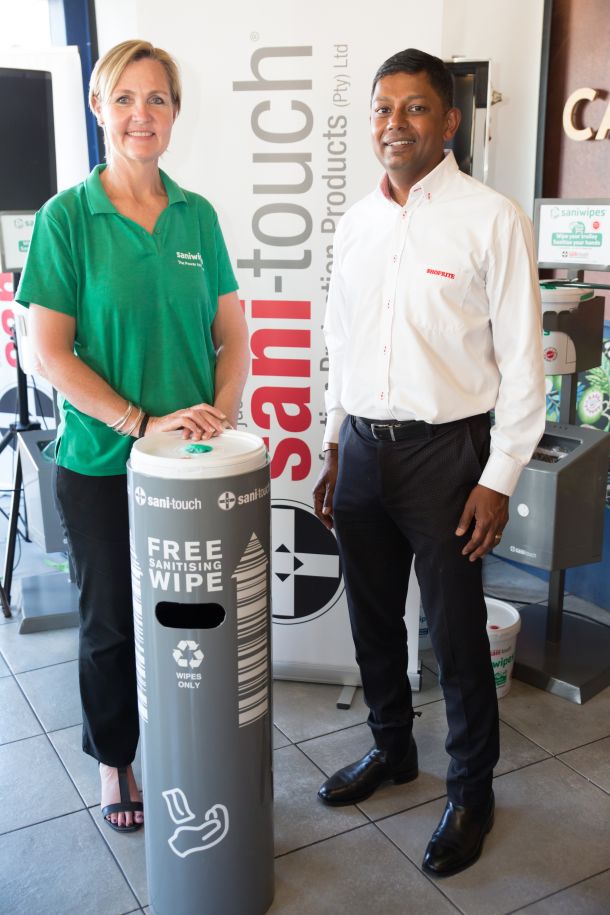Increase in ethical category visions helping to win hearts & minds as well as deliver growth
There is an emerging trend to bring a socially responsible element to category visions that shapes the category and brand in greater depth but also changes how shoppers perceive both moving forward.
A category vision is more than just a commercial asset to drive growth for the retailer and the brand; it’s about winning both hearts and minds. Both retailers and shoppers alike will embrace an inspirational vision with an emotive call to action.
It’s a fact that most food and non-food FMCG suppliers are focused on selling brands and products, and yet they are aiming to engage with retailers whose aim is to sell and grow categories. By doing so, they risk engaging the retailer on only one comparatively small element of what is commercially important to them. The bottom line is that if suppliers want to have traction with retailers, they need to be talking in a language they understand, and that language is about growing categories. Being able to discuss how you can help them achieve category growth is a very different – and more constructive – conversation than one purely about selling a product or a brand.
The first priority for any supplier is get their product listed. They will meet the retailer and present their product, talk about its features, and distinctive benefits to secure listings. However, in today’s environment this is no longer enough. There needs to be a conversation about the impact and contribution that the product or brand has on the category. This can take several forms from driving footfall to store or bringing new shoppers into the category, to increasing average transaction value or overall category spend or perhaps a more commercial contribution such as profit generation or margin enhancement. Initially this conversation is centred on the here and now but at some point suppliers who seek meaningful and long-term relationships with their retail partners need to demonstrate their plans for sustainable category growth; namely, how will you contribute to and influence a category over a three to five-year period?
This, of course, is not a new concept. Most major brands in the UK will have a category vision of some sort. Second tier and challenger brands are also likely to have a vision in place, dependent on their position in the category. The reality, though, is that not all suppliers sufficiently understand the potential for what can be achieved. The key is that the vision has to be action-oriented and must be able to demonstrate a clear return on investment. This may require the supplier to accept that the cost in time and budget required to properly prepare a category vision is a genuine investment. To prepare an effective category vision suppliers need to be ready to invest in insight rather than jumping to unfounded conclusions. That means remaining objective throughout and following best practice in generating the vision to make it more acceptable to retail partners.
Too many suppliers, though, are still to put a robust category vision in place even though they could, particularly if they have a unique or distinct perspective on the category. For example, a cheese supplier may have a speciality product, which the brand leaders in the cheese category may not have. This presents an opportunity to take a position of leadership, to provide a vision specific to this particular aspect of or, indeed, the whole cheese category and collaborate with the retailers in this space. Yet too few suppliers seem to recognise the value to the category, retailer and themselves that can be achieved by offering a whole category vision, even if they are presently only players in one small aspect of the category. Some of Bridgethorne’s most successful category visions have been those developed by challenger brands, adopting a much broader category definition than they may have previously dared.
So any supplier – even if it is just a small, challenger brand – can use a category vision to influence a whole category, by demonstrating clear thought leadership. In fact, they may often be better placed to do so as they have less at stake and can provide greater levels of objectivity. To do so, though, the supplier needs to be able to think more broadly than the immediate market served by its products, to demonstrate a wider understanding of consumer and shopper needs in the context of the category concerned, and of retailers’ decision-making processes. This is the smaller supplier’s opportunity to prove it is not a one trick pony and that it has the benefits of the entire category rather than simply the section in which it presently functions at heart.
Because category visions are, by their very nature, structured, this leaves less to chance and militates against the risk of a supplier becoming too brand centric in its approach to retailers. An effective vision will help you be more altruistic in your approach, offering structured insight than can help guide the category and the retailer through the ensuing few years.
Gaining the insight and intelligence needed to prepare a credible and broad category vision means starting with the needs of consumers, understanding why they consume from the category and how they interact with it. Because, only once you understand why someone shops and consumes can you define what sits inside the category. For example, why are home baking ingredients found in four different sections of the store? If I’m baking a fresh cream Victoria sponge, then the category is not just flour; it includes eggs, sugar, icing, cream, jam and potentially fresh fruit. This can lead to the supplier viewing the category through an entirely different lens, prompting both greater challenges and opportunities prompted by how the category is shopped and consumed not by how it is supplied. This enables the supplier to explore the ‘real’ category, based on need as opposed to how the supplier manufactures or supplies, and open up opportunities to better satisfy needs, increase basket size for good reason and incrementally. By-passing this approach would risk any category vision being more vanilla in its output.
So, ask yourselves what other perspectives could be offered that would also deliver category growth, because this is the approach that is driving category visions towards having an ethical or socially responsible purpose. There could be any number of themes, issues or causes that a category vision might address – from healthy eating and general wellbeing to happiness or doing right by your baby. As long as the angle is compatible with the brand and the category there need be no conflict between the vision’s commercial and ethical aspects.
Indeed it is this approach that has informed some of the more profound category activity in recent years. For example, Danone has intrinsically linked itself with infant nutrition as a whole, supporting mothers and babies to get the right nutrition in the first 1,000 days – a critical window of opportunity for lifelong health. Danone’s focus is much broader than just baby milk and food. Similarly, Pampers has partnered with UNICEF since 2006 to help millions of babies in the Third World with inoculations to protect against newborn tetanus. These angles are not only compatible with both the category and the brand but the issues resonate with the shopper, those most likely to be buying the products. Category Visions like these truly expand the role that a category and brand plays in the broader fulfillment of a shopper’s journey to something more emotive.
This is not to say, of course, that if a supplier restricts itself only to the aspect of a category in which it currently operates, its investment would be wasted. Such a vision will still present new opportunities through the lens upon which it explores, though the opportunity to grow the category will be narrower and perhaps less fulfilling to broader life (and shopper) journeys.
A broader and or more emotive approach to category visions can provide greater incentive for retailers, suppliers and, of course, those buying the products. Category visions will continue to become increasingly channel-specific, with online key; activation-led, and developed jointly between retailers and core suppliers. Although the shopper doesn’t care necessarily about the commercial benefits to the retailer, you need them to buy into your vision through effective activation because giving them an incentive to act in line with your vision – and being able to demonstrate that to retail partners – is one of your key objectives.
A category vision will inform business and brand strategy and, as a result, circumvent – not eliminate – annual planning processes because much of the thinking will already have been done and the framework for growth established. It is accepted now that any supplier that thinks a category vision is not relevant for their business is less likely to grow, less likely to remain relevant and less likely to be seen by retail partners as genuine champions of category, consumer and shopper. The question is whether you want to embrace this or risk being left behind.
News Category
- International retailers
- On the move
- Awards and achievements
- Legislation
- Wine and liquor
- Africa
- Going green
- Supplier news
- Research tools
- Retailer trading results
- Supply chain
- Innovation and technology
- Economic factors
- Crime and security
- Store Openings
- Marketing and Promotions
- Social Responsibility
- Brand Press Office
Related Articles

Spar reports growth of 3.3% as global retail sa...

Informal Retail in Africa: Could Technology be ...

Consumers need a good reason to shop this Black...

Checkers launches deals onto its Sixty60 home d...


